Best Beech Trees for Gardens: Finding Your Perfect Specimen
Published: August 28, 2025 at 10:13:39 AM UTC
Beech trees stand as living monuments in the landscape, offering a perfect blend of elegance, shade, and seasonal beauty. With their smooth gray bark, vibrant foliage, and stately presence, these magnificent trees can transform any garden into a showcase of natural splendor. Whether you're looking for a dramatic focal point, a living privacy screen, or a legacy tree that will outlive generations, selecting the right beech variety is crucial for garden success. In this comprehensive guide, we'll explore the finest beech tree varieties for home gardens, detailing their unique characteristics, growing requirements, and landscape applications. From compact cultivars suitable for smaller spaces to the grandeur of full-sized specimens, you'll discover which beech trees deserve a place in your outdoor sanctuary.
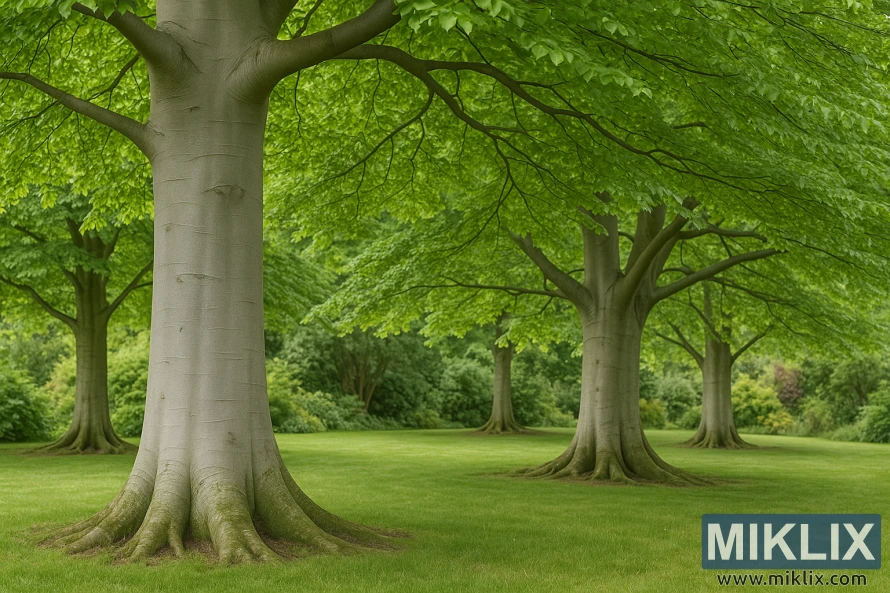
Understanding Beech Trees: Nature's Garden Aristocrats
Beech trees (Fagus species) are deciduous hardwoods renowned for their smooth, elephant-gray bark that remains unblemished even as the trees mature. Native to temperate regions across North America, Europe, and Asia, these long-lived trees can survive for 150-300 years when planted in favorable conditions.
What makes beech trees particularly valuable in garden settings is their versatility. They thrive as specimen trees, create magnificent avenues when planted in rows, form dense hedges when pruned regularly, and provide reliable shade with their broad, spreading canopies.
| Beech Characteristic | Garden Benefit |
| Smooth gray bark | Year-round visual interest, especially in winter |
| Dense foliage | Excellent shade and privacy |
| Fall color | Stunning golden-bronze autumn display |
| Marcescent leaves | Retained winter foliage adds texture and interest |
| Wildlife value | Provides habitat and food (beechnuts) for birds and mammals |
Before exploring specific varieties, it's important to understand that beech trees generally prefer well-drained, slightly acidic soil and adequate moisture. They can grow in full sun to partial shade, though fuller sun exposure typically produces denser foliage and better fall color. Most beech trees develop shallow root systems, so proper spacing from structures and competing plants is essential.
Top 7 Beech Trees for Garden Settings
After analyzing growth habits, aesthetic appeal, and adaptability to garden environments, these seven beech varieties stand out as exceptional choices for home landscapes. Each offers unique characteristics that make them valuable additions to different garden styles and sizes.
Different beech varieties offer unique colors, forms, and garden applications
1. European Beech (Fagus sylvatica)
The European Beech serves as the foundation for most ornamental beech varieties. This majestic tree reaches 50-60 feet tall with a spread of 35-45 feet at maturity, creating a broad, dense canopy that casts deep shade. Its smooth gray bark remains a standout feature throughout its long life.
The glossy green leaves turn a rich copper-bronze in autumn, and many trees retain their dried leaves through winter, adding texture and interest to the winter landscape. European Beech adapts well to various soil types as long as drainage is good.
Advantages
- Extremely long-lived (200+ years)
- Excellent shade tree once established
- Relatively pest and disease resistant
- Makes an outstanding specimen tree
Considerations
- Requires significant space
- Slow growth rate (9-12 inches per year)
- Shallow roots compete with other plants
- Difficult to grow plants beneath
European Beech creates a magnificent presence in larger gardens
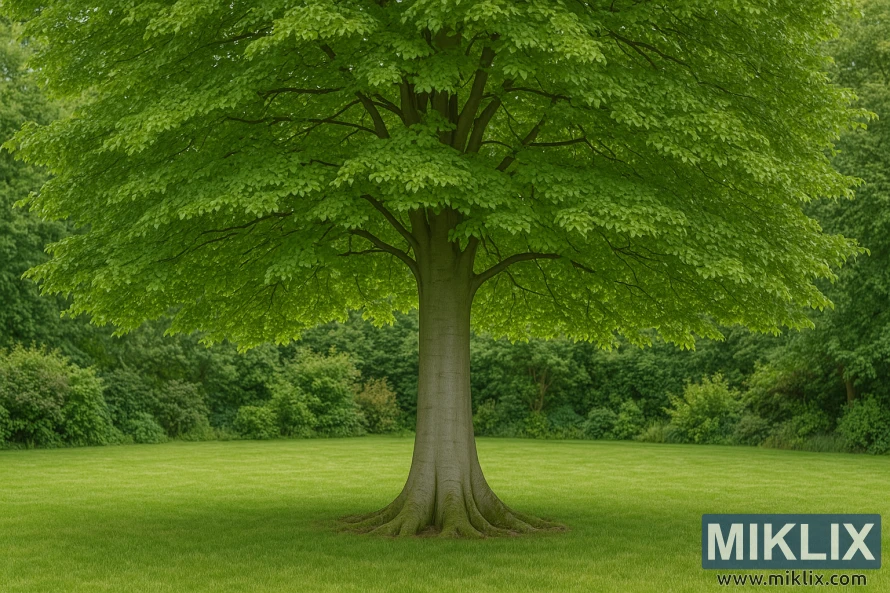
2. Copper Beech (Fagus sylvatica 'Atropunicea' or 'Purpurea')
Copper Beech provides dramatic purple foliage throughout the growing season
Copper Beech is perhaps the most dramatic of all beech varieties, featuring deep purple-burgundy foliage that creates a stunning contrast against green landscape elements. This cultivar of European Beech maintains the same majestic form as the species but adds exceptional color impact.
The purple leaves emerge in spring, hold their color throughout summer (though they may green slightly in extreme heat), and turn coppery in fall. Like the species, Copper Beech can reach 50-60 feet tall and 40-50 feet wide, requiring ample space to develop its characteristic broad crown.
Copper Beech makes an exceptional focal point in larger gardens and parks. Its rich color provides a perfect backdrop for lighter-colored plants and creates a sense of depth in the landscape. Like all beeches, it prefers well-drained soil and protection from harsh afternoon sun in hotter climates.
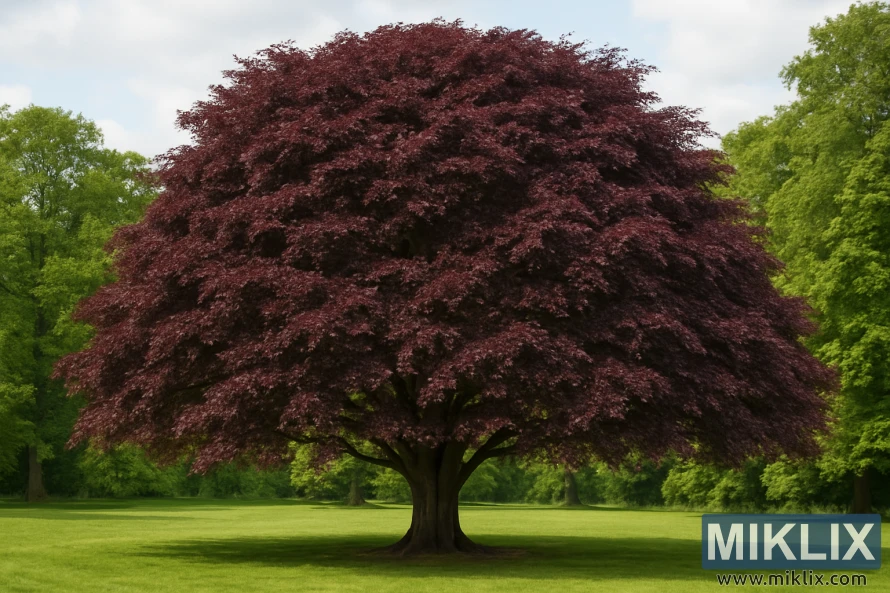
3. Weeping European Beech (Fagus sylvatica 'Pendula')
For gardens seeking a dramatic sculptural element, the Weeping European Beech delivers extraordinary visual impact. This cultivar features branches that cascade toward the ground, creating a living fountain effect that serves as a captivating focal point in any landscape.
Weeping Beech typically grows 30-50 feet tall with a similar spread, though its final form depends greatly on training when young. Each tree develops a unique character over time, with some forming tent-like canopies and others creating more upright forms with weeping secondary branches.
The weeping habit is complemented by the same glossy green foliage and smooth gray bark characteristic of European Beech. Fall color ranges from golden yellow to rich copper, adding seasonal interest.
Weeping European Beech creates a dramatic sculptural element in the landscape
The Weeping Beech creates a living sculpture that evolves with time, becoming more characterful and dramatic with each passing year. No two specimens develop exactly alike, making each one a unique garden treasure.
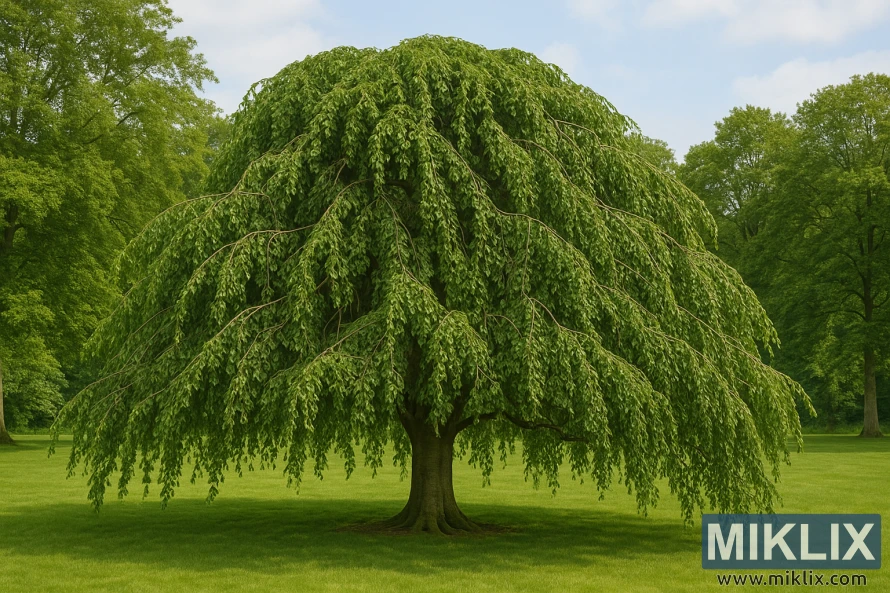
4. American Beech (Fagus grandifolia)
American Beech offers native beauty and wildlife value
For North American gardeners seeking native tree options, the American Beech provides stately beauty and significant ecological value. Native to eastern North America, this species grows 50-70 feet tall with a spread of 40-60 feet at maturity.
American Beech features toothed, elliptical leaves that turn golden bronze in fall and often persist through winter. Its light gray bark remains smooth even in maturity, creating year-round interest. The tree produces small, triangular nuts that attract wildlife including birds, squirrels, and deer.
This species grows best in moist, well-drained, acidic soils and tolerates more shade than European varieties. It makes an excellent choice for naturalistic landscapes and woodland gardens where its native character can shine.
Native Value: American Beech provides critical habitat and food for over 40 species of birds and mammals. Its nuts are an important wildlife food source, while its dense canopy offers nesting sites and shelter.
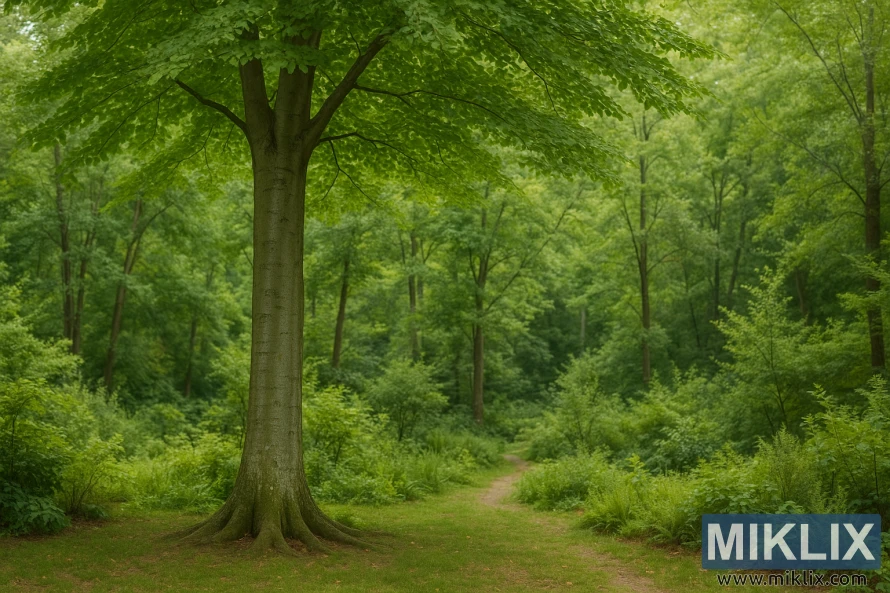
5. Tricolor Beech (Fagus sylvatica 'Roseomarginata')
For gardens seeking a truly distinctive specimen tree, the Tricolor Beech offers unmatched foliage interest. This striking cultivar features purple leaves with irregular pink and cream margins, creating a variegated effect that draws the eye from across the landscape.
Tricolor Beech typically grows more slowly than other varieties, reaching 30-40 feet tall and 30 feet wide at maturity. The variegation is most pronounced in spring when new leaves emerge, providing a spectacular display of color.
This variety benefits from some afternoon shade in hotter climates, which helps preserve the delicate leaf coloration. Like all beeches, it prefers well-drained soil and consistent moisture, especially when young.
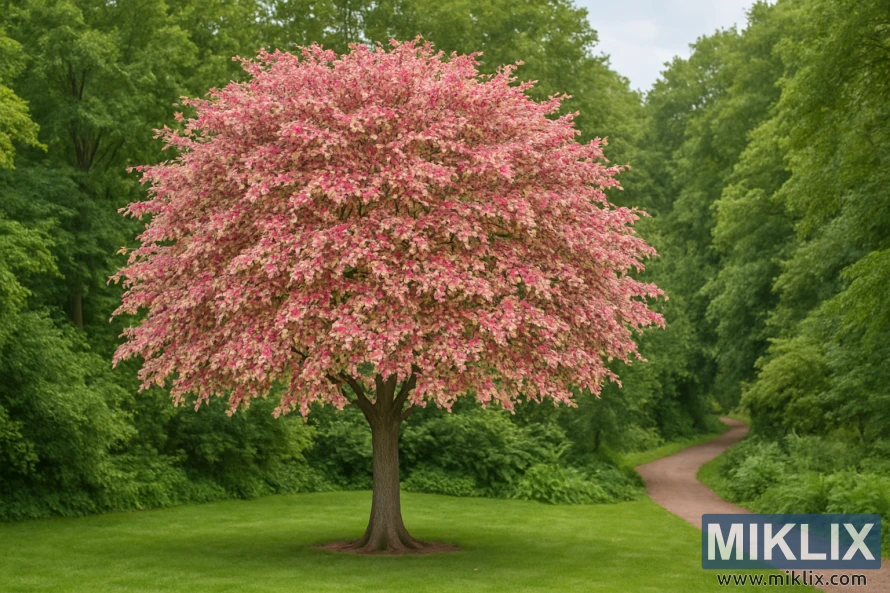
6. Columnar European Beech (Fagus sylvatica 'Dawyck' or 'Fastigiata')
Columnar European Beech provides vertical accent without spreading width
For gardens with limited horizontal space, Columnar European Beech offers the elegance of beech trees in a narrow, upright form. These cultivars grow 40-50 feet tall but spread only 10-15 feet wide, making them ideal for smaller properties or as vertical accents in larger landscapes.
Several columnar varieties exist, including 'Dawyck' (green foliage), 'Dawyck Purple' (purple foliage), and 'Dawyck Gold' (golden foliage). All feature strongly upright branches that create a narrow, fastigiate form perfect for framing views or lining driveways.
These varieties maintain the smooth gray bark characteristic of beech trees while requiring significantly less ground space. They work beautifully as specimens, in groups, or as living architectural elements in formal gardens.
Columnar Beech Varieties
- Dawyck Green - Classic green foliage with narrow form
- Dawyck Purple - Deep purple foliage on a columnar frame
- Dawyck Gold - Bright golden foliage that lightens in summer
All varieties maintain a narrow width of 10-15 feet while reaching heights of 40-50 feet, making them perfect for smaller gardens or as vertical accents.
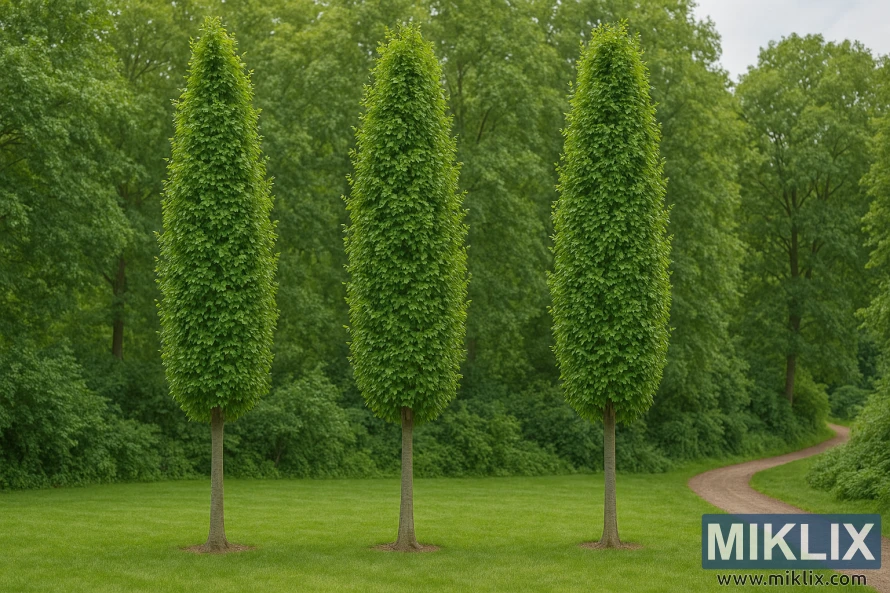
7. Dwarf European Beech (Fagus sylvatica 'Tortuosa Purpurea' or 'Purpurea Nana')
For smaller gardens or those seeking a more manageable beech specimen, dwarf varieties offer the distinctive beech characteristics in a compact package. These slow-growing cultivars typically reach just 10-15 feet tall and wide over many decades, making them suitable for urban gardens and smaller properties.
Varieties like 'Tortuosa Purpurea' feature twisted, contorted branches with purple foliage, creating an interesting sculptural form. 'Purpurea Nana' offers a more rounded shape with deep purple leaves that add rich color to the landscape.
These dwarf varieties maintain the smooth bark and seasonal interest of larger beeches but in a size that works in contemporary garden spaces. They make excellent focal points in Japanese-inspired gardens, rock gardens, or mixed borders.

Planting and Care Guide for Garden Beech Trees
Proper planting is crucial for long-term beech tree success
Beech trees can live for centuries when properly planted and maintained. Follow these essential guidelines to ensure your beech thrives in your garden setting.
Planting Your Beech Tree
Site Selection
- Choose a location with well-drained soil
- Provide full sun to partial shade (morning sun/afternoon shade ideal in hot climates)
- Allow adequate space for mature size (check specific variety requirements)
- Keep at least 20 feet from buildings, driveways, and underground utilities
- Avoid competition from other large trees
Soil Preparation
- Test soil pH (beeches prefer slightly acidic to neutral soil, pH 5.5-6.5)
- Incorporate organic matter if soil is poor
- Ensure good drainage – beeches hate wet feet
- Avoid amending just the planting hole; prepare a wider area
Planting Process
- Dig a hole 2-3 times wider than the root ball but only as deep
- Remove container or burlap and inspect roots (prune any circling roots)
- Position tree with the root flare slightly above ground level
- Backfill with native soil, tamping gently to remove air pockets
- Create a water basin around the drip line
- Water thoroughly after planting
- Apply 2-3 inches of mulch in a wide ring, keeping it away from the trunk
- Stake only if necessary in very windy sites (remove stakes after one year)
Ongoing Care Requirements
Watering
- Water deeply once weekly during first 2-3 years
- Increase frequency during drought periods
- Established trees (5+ years) need supplemental water only during extended drought
- Avoid frequent shallow watering which encourages surface roots
Fertilizing
- Apply balanced slow-release fertilizer in early spring
- Use a formula designed for trees and shrubs
- Fertilize lightly – excessive nitrogen can promote weak growth
- Follow package directions for application rates
- Mature trees in good soil may need minimal fertilization
Pruning
- Prune minimally – beeches naturally form beautiful shapes
- Remove dead, damaged, or crossing branches in late winter
- For hedges, prune in mid-summer
- Never remove more than 25% of canopy in one year
- Avoid pruning in spring when sap is flowing
Beech trees offer changing beauty through all four seasons
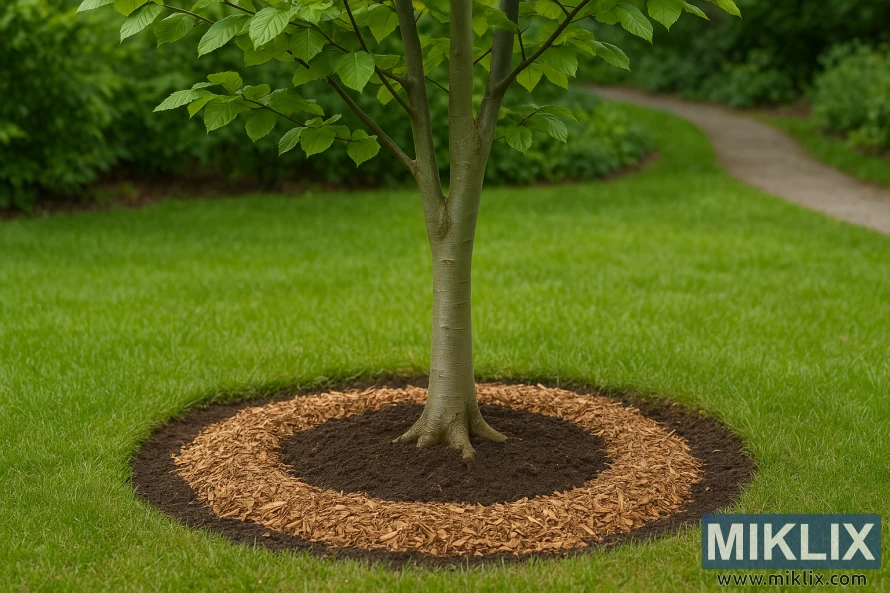
Common Problems and Solutions
What is beech leaf disease and how can I prevent it?
Beech leaf disease is a relatively new condition affecting both European and American beech trees. It's believed to be caused by a nematode (Litylenchus crenatae) and causes darkened bands between leaf veins, leaf curling, and eventual tree decline.
Prevention focuses on maintaining tree health through proper watering, mulching, and fertilization. If you notice symptoms, consult an arborist immediately. Some treatments involving trunk injections may help manage the disease in early stages.
Why is my beech tree's bark developing cracks or cankers?
Beech bark disease occurs when the beech scale insect damages bark, allowing fungal pathogens to enter. Look for small white woolly spots (scale insects) on the trunk, followed by cankers and cracked bark.
Treatment involves controlling the scale insects with horticultural oil sprays and maintaining overall tree health. Severely affected branches may need removal. Consult a certified arborist for proper diagnosis and treatment options.
How can I protect my beech tree during construction?
Beech trees are highly sensitive to soil compaction and root disturbance. During construction, establish a protection zone extending at least to the drip line. Install temporary fencing around this zone and prohibit equipment, material storage, and foot traffic within it.
Avoid changing soil grades around established trees, and if trenching is necessary, try to stay outside the drip line. Consider consulting with an arborist before beginning construction near valuable beech specimens.
Creative Ways to Use Beech Trees in Your Garden Design
Beech trees offer remarkable versatility in landscape design. Their architectural form, distinctive foliage, and seasonal interest make them valuable in various garden roles. Consider these creative applications for your beech specimens.
Formal Hedging
European beech makes exceptional formal hedges that offer year-round interest. Unlike many deciduous hedges, beech often retains its copper-colored leaves through winter, providing structure and privacy even after leaf drop. Plant small specimens 18-24 inches apart and prune annually in mid-summer to develop dense growth.

Specimen Planting
A single well-placed beech tree can anchor an entire landscape design. Purple varieties like Copper Beech create dramatic contrast against green plantings, while weeping forms add sculptural interest. Position specimen beeches where they can be appreciated from multiple viewing points and allow ample space for their mature spread.
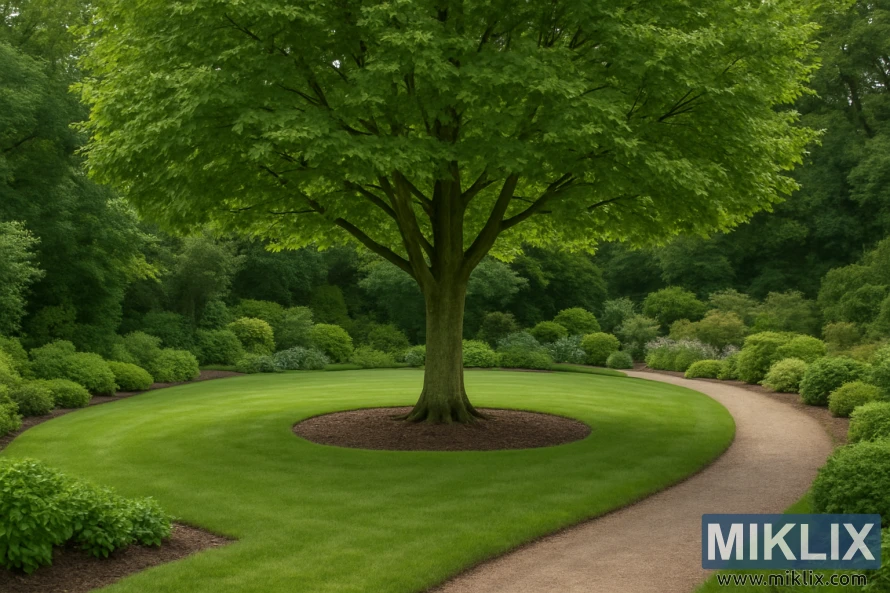
Woodland Gardens
American beech excels in naturalistic woodland settings where it can be underplanted with shade-tolerant natives. Create a multi-layered ecosystem by combining beech trees with understory shrubs like native azaleas and ground-layer plants such as ferns, woodland sedges, and spring ephemeral wildflowers.
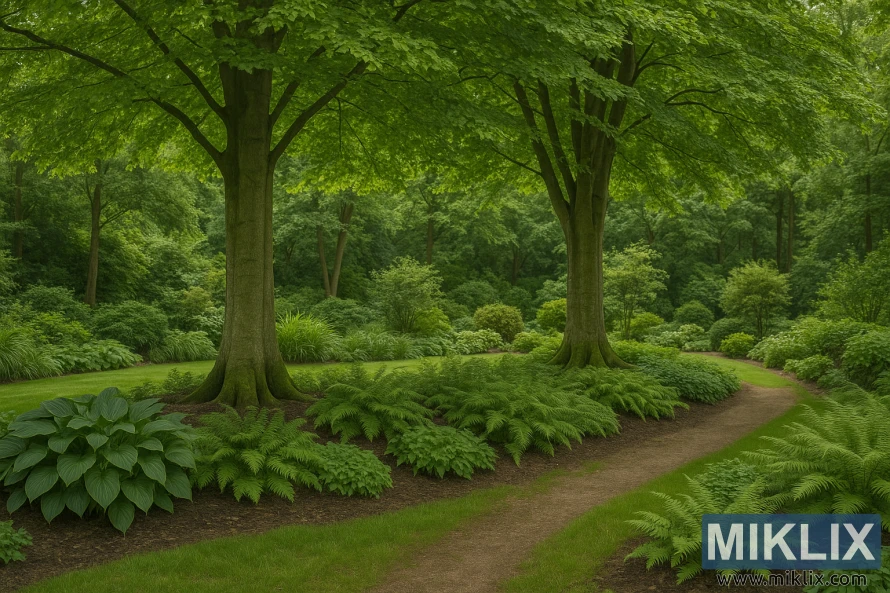
Beech Allées and Avenues
For larger properties, a double row of beech trees creates a magnificent allée that frames views and pathways. European or American beech varieties work well for this application, while columnar forms can create a similar effect in more confined spaces. Plant trees 15-20 feet apart within rows for standard varieties, or 8-10 feet apart for columnar types.
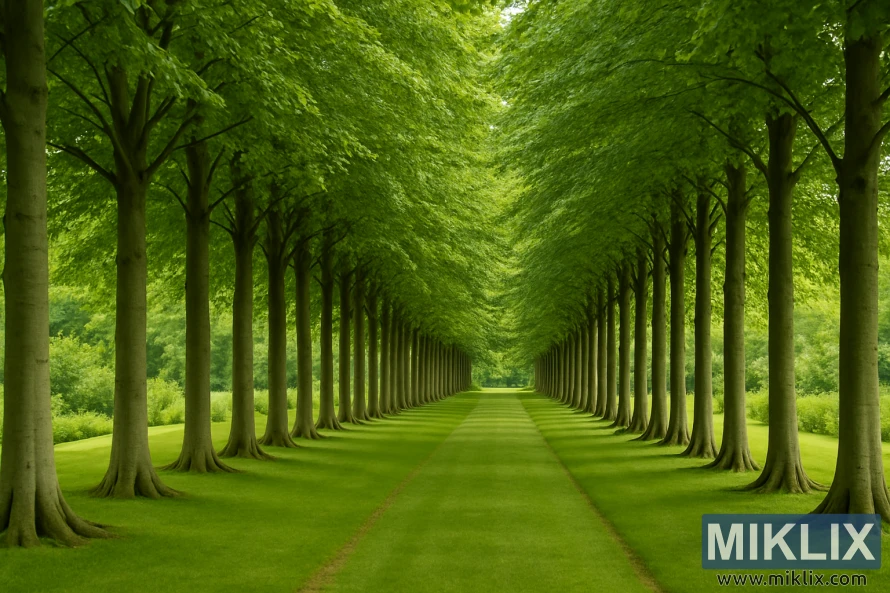
Mixed Borders with Dwarf Varieties
Smaller beech cultivars add structure and year-round interest to mixed borders. Their distinctive foliage colors complement flowering perennials and provide a strong vertical element. Consider purple-leaved dwarf varieties as focal points in perennial borders where they create striking contrast with silver-leaved plants and bright flowers.
Design Tip: When using beech trees as focal points, consider their appearance in all seasons. Position purple or variegated varieties where they'll be backlit by morning or evening sun to enhance their foliage color. Place weeping forms where their silhouette can be appreciated against the sky or a simple background.
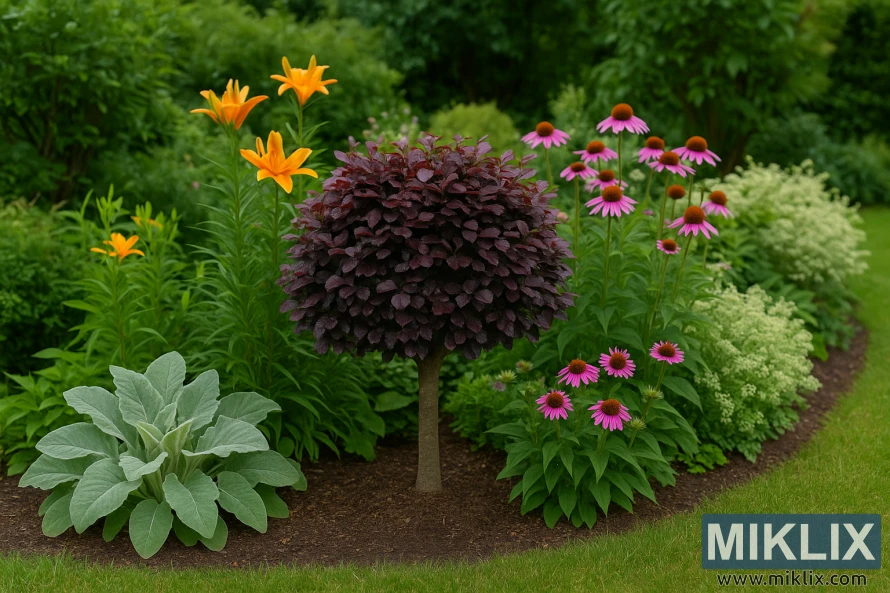
Conclusion
Different beech varieties can be combined for maximum landscape impact
Selecting the right beech tree for your garden involves balancing aesthetic preferences with practical considerations. These magnificent trees represent a long-term investment in your landscape, potentially outliving generations of gardeners when properly sited and maintained.
Key Selection Factors
- Available space - Consider both height and spread at maturity
- Soil conditions - Ensure good drainage and proper pH
- Climate compatibility - Most beeches perform best in USDA zones 4-7
- Maintenance capacity - Young trees need regular watering
- Design objectives - Focal point, shade, privacy, or seasonal interest
- Budget considerations - Larger specimens cost more but provide immediate impact
Common Mistakes to Avoid
- Insufficient spacing - Planting too close to structures or other trees
- Poor drainage - Beeches hate wet feet and will decline in soggy soil
- Improper planting depth - Root flare should be visible above soil
- Trunk damage - Protect sensitive bark from mowers and trimmers
- Over-fertilization - Can lead to weak growth susceptible to problems
- Excessive pruning - Beeches naturally form beautiful shapes with minimal intervention
Remember that beech trees are slow-growing investments that improve with age. Their first few years in your garden may show modest growth, but with proper care, they'll develop into magnificent specimens that enhance your landscape for decades to come.
Important Note: Before planting any beech tree, check with local extension services about beech leaf disease prevalence in your area. This emerging problem affects both European and American beech species and may influence variety selection or management practices.
Further Reading
If you enjoyed this post, you may also like these suggestions:
- A Guide to the Best Arborvitae Varieties to Plant in Your Garden
- Best Oak Trees for Gardens: Finding Your Perfect Match
- A Guide to the Best Varieties of Dogwood Trees for Your Garden
